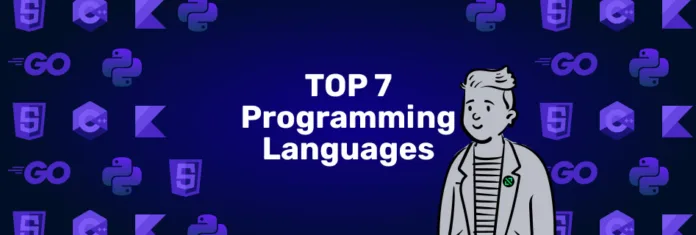As the tech world evolves rapidly, so does the demand for professionals skilled in the best programming languages 2025 has to offer. Whether you’re an aspiring software developer, a seasoned programmer looking to upgrade your toolkit, or a student planning your tech career, knowing which languages will be most relevant can give you a major edge.
The first step to success in programming is choosing the right language based on industry trends, job demand, and versatility. In this article, we explore the top 7 programming languages you should learn in 2025 to stay relevant and in demand in the job market.
1. Python
🔹 Why Learn It:
Python continues to dominate the coding world due to its simplicity and vast application across data science, web development, automation, AI, and machine learning. In 2025, its popularity remains strong among startups and tech giants alike.
🔹 Use Cases:
Artificial Intelligence & Machine Learning
Data Analytics
Web Development (Django, Flask)
Automation Scripts
🔹 Benefits:
Easy-to-read syntax
Huge community support
Endless libraries and frameworks
2. JavaScript
🔹 Why Learn It:
If you’re interested in building interactive websites or full-stack applications, JavaScript remains indispensable. With the rise of frontend frameworks like React and backend environments like Node.js, it remains a top coding language in 2025.
🔹 Use Cases:
Frontend and backend web development
Mobile app development (React Native)
Game development
Web servers and APIs
🔹 Benefits:
Works across all major browsers
Constantly evolving ecosystem
Ideal for both beginners and professionals
3. Go (Golang)
🔹 Why Learn It:
Go is a statically typed language developed by Google, designed for performance and simplicity. It is increasingly used for cloud-native applications, microservices, and high-concurrency systems, making it one of the most in-demand programming languages in 2025.
🔹 Use Cases:
Cloud computing (Docker, Kubernetes)
Backend systems
Network programming
🔹 Benefits:
Fast compile times
Clean and readable syntax
Scalable for large applications
4. Rust
🔹 Why Learn It:
Known for its memory safety and zero-cost abstractions, Rust is making waves in systems programming and embedded development. In 2025, Rust is being adopted by more tech companies for its performance and security.
🔹 Use Cases:
System-level programming
Embedded systems
WebAssembly
Blockchain development
🔹 Benefits:
Memory-safe by design
Growing community and adoption
Backed by companies like Mozilla and Dropbox
5. Java
🔹 Why Learn It:
Despite being over two decades old, Java remains a go-to language in the enterprise world. In 2025, it’s still widely used in Android development, banking systems, and cloud-based applications.
🔹 Use Cases:
Android app development
Enterprise software
Web applications
Big data technologies (Hadoop, Spark)
🔹 Benefits:
Platform independence (Write Once, Run Anywhere)
Rich API and open-source libraries
Strong performance and scalability
6. TypeScript
🔹 Why Learn It:
TypeScript is a superset of JavaScript that adds static typing. As modern frontend frameworks like Angular and React adopt it, it’s becoming essential for scalable web apps in 2025.
🔹 Use Cases:
Large-scale frontend applications
Backend APIs (with Node.js)
Cross-platform mobile development
🔹 Benefits:
Enhances code quality and maintainability
Seamlessly integrates with JavaScript
Preferred for enterprise-grade projects
7. Kotlin
🔹 Why Learn It:
Kotlin is Google’s preferred language for Android development and is gaining traction for backend services as well. With its concise syntax and full interoperability with Java, it’s ideal for modern mobile app development in 2025.
🔹 Use Cases:
Android app development
Server-side development
Cross-platform development (via Kotlin Multiplatform)
🔹 Benefits:
Safer code with null safety
Easier syntax than Java
Growing demand in mobile app companies
📈 Future-Proof Your Coding Career
Learning any of these best programming languages 2025 is not just about following trends; it’s about aligning your skills with real-world demand. Whether your goal is to break into software development, switch tech stacks, or scale your freelance work, these languages offer the most promise in terms of job opportunities, career flexibility, and project versatility.
🧠 How to Choose the Right Language for You
Consider these factors:
Your Goals: Want to build mobile apps, web apps, or systems software?
Job Market: Check job boards to see which languages are in demand locally or remotely.
Learning Curve: Some languages like Python and JavaScript are beginner-friendly.
Community Support: A strong developer community helps with problem-solving and learning.
🛠 Final Thoughts
2025 is shaping up to be a year of innovation and expansion in software development. By mastering one or more of the top coding languages discussed above, you set yourself up for long-term success. As industries evolve, your adaptability and willingness to learn new skills will keep you ahead of the curve.
So whether you’re a complete beginner or a seasoned developer, it’s time to dive into these programming skills for developers and future-proof your tech career.
